Quite possible to modify this program according to your wishes!!!
Day – 1 : Arrive in Ulan Bator city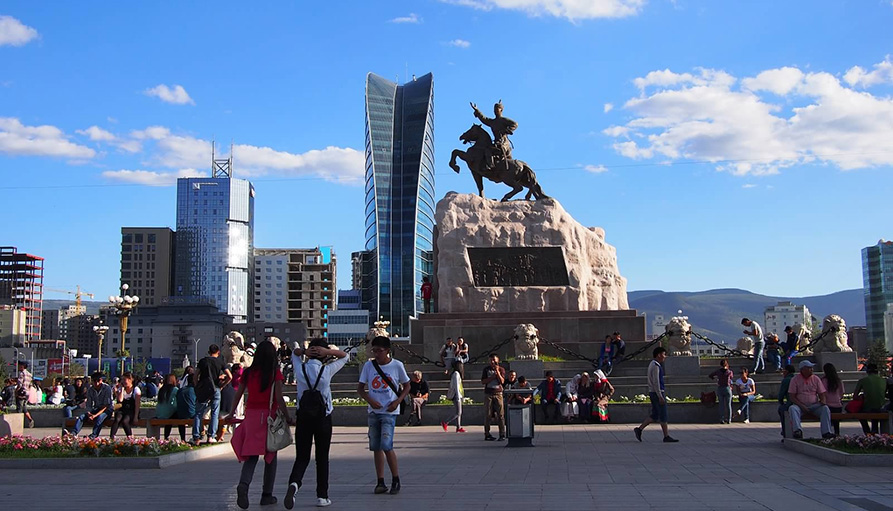
Arrival at Ulan Bator and transfer to your hotel for a warm shower and a moment to relax after this long flight.
Afternoon, visit of Gandantegchinlin Monastery. Built in 1809, the Gandantegchinlin Monastery – formerly known as the Gandan Monastery – is a Tibetan-style Buddhist monastery located in Ulan Bator. Its name of Tibetan origin can be translated as “Great site full of Joy”.Several hundred monks currently reside there.
It contains a statue of Megjid-Janraiseg (Bodhisattva Avalokiteshvara – called Chenrezig in Tibetan) by 25 meters high.
The original statue, made of copper, was erected in 1911 and was dismantled in 1937 by Soviet troops (the remains of the statue were subsequently used to make bullets during the siege of Leningrad). 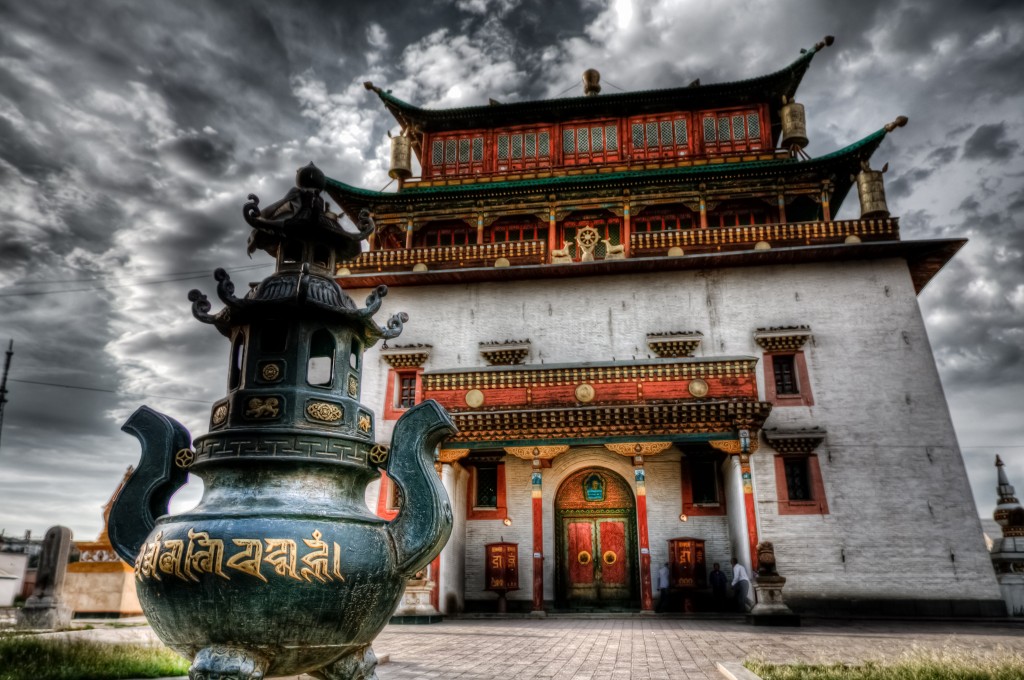 Following the fall of communist regimes, it was rebuilt in 1996 with donations of gold from Nepal and Japan.
Following the fall of communist regimes, it was rebuilt in 1996 with donations of gold from Nepal and Japan.
Adorned with gold and nearly 2,286 precious stones, the statue weighs over 20 tons and is covered with nearly 100 kg of silk clothing.
Visit of the National Museum of Mongolian History. The National Museum of Mongolian History tells the story of the country, from prehistoric times to today. In this museum there is also an ethnographic section with costumes and jewels from various ethnic groups of countries: Kazakhstan, Buriats, Clzemchins…
Dinner and overnight at the hotel.
Day – 2: Ulan Bator – Mini Desert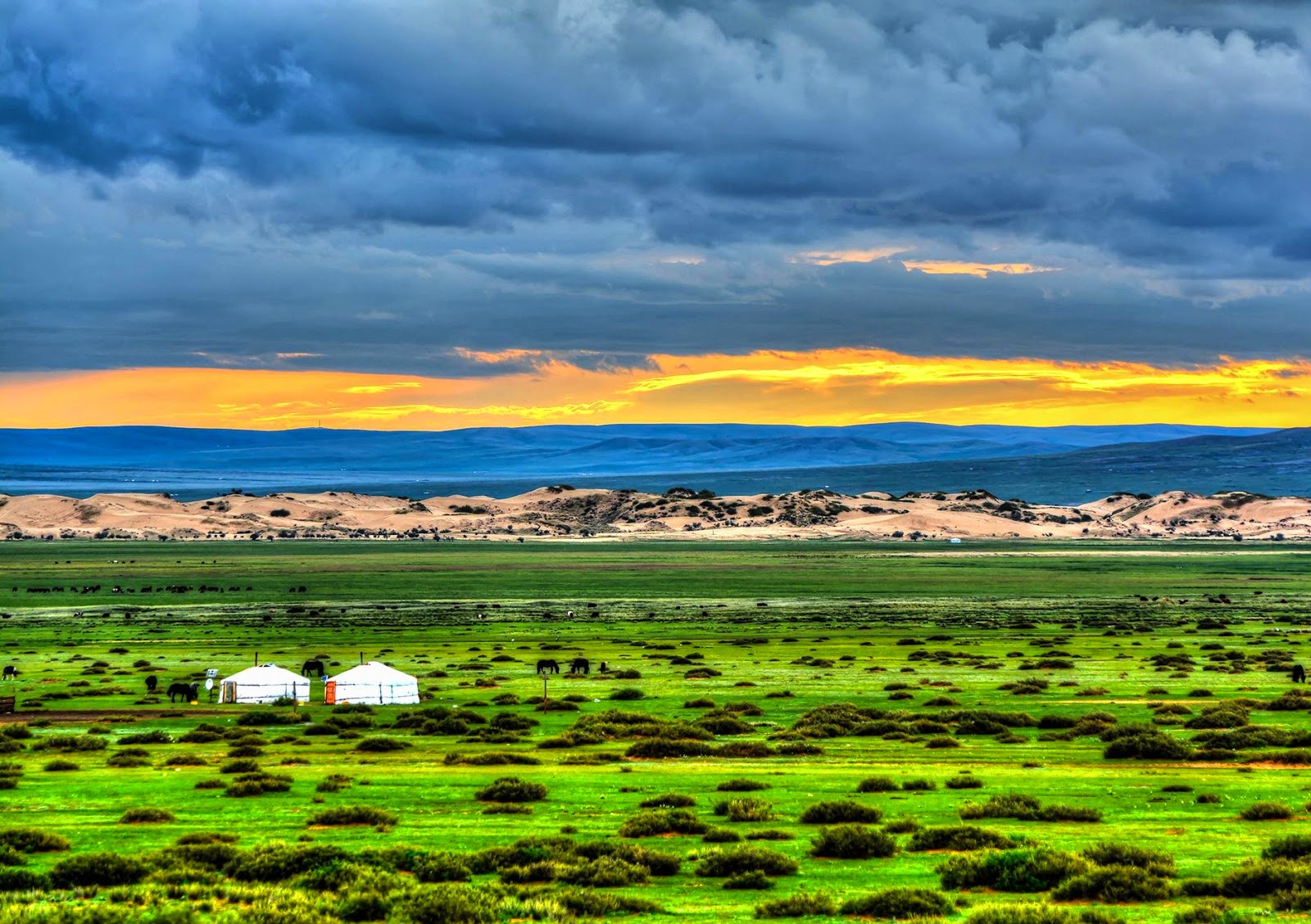
Breakfast and departure with our 4×4 vehide to the Mini Gobi Desert, the “Elsen Tasarkhai”.
Lunch on the roadside.
We meet the nomadic herders who will be our riding guide for the next three days on horseback in Khugnu Tarna National Park, between mountain, dunes and steppes.
We set up our first camp in the desert, in a sparsely populated area on the northern edge of the Mini Gobi Desert.
Each rider installs his own tent (tent “Quechua” provided at no extra cost).
A shower tent and a large tent for preparing meals make our camp comfortable.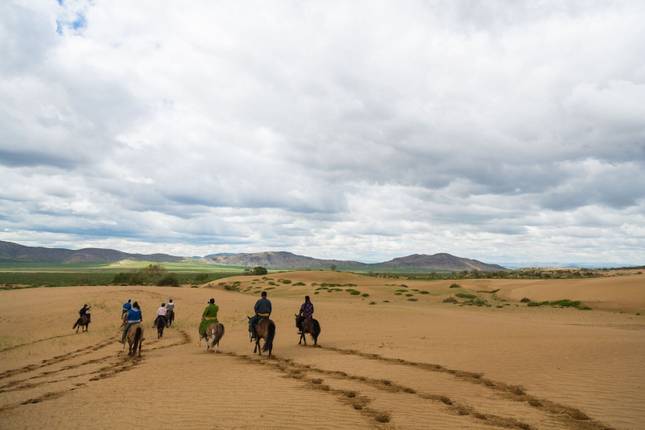
Dinner and overnight in bivouac
Day – 3,4: Horseback Riding in the Park National of Khugnu Tarna
We leave for 2 days riding in the wild nature of Mini Gobi.
In this environment of dunes, mountains and steppes, our SUVs will be very useful for carrying luggage, tents and supplies.
Know that this horseback ride in the desert of Mini Gobi is the only opportunity to ride in a typical landscape of the Gobi desert, because there are no horses at the bottom of the southern Gobi, only camels.
This region is really the heart of Mongolia.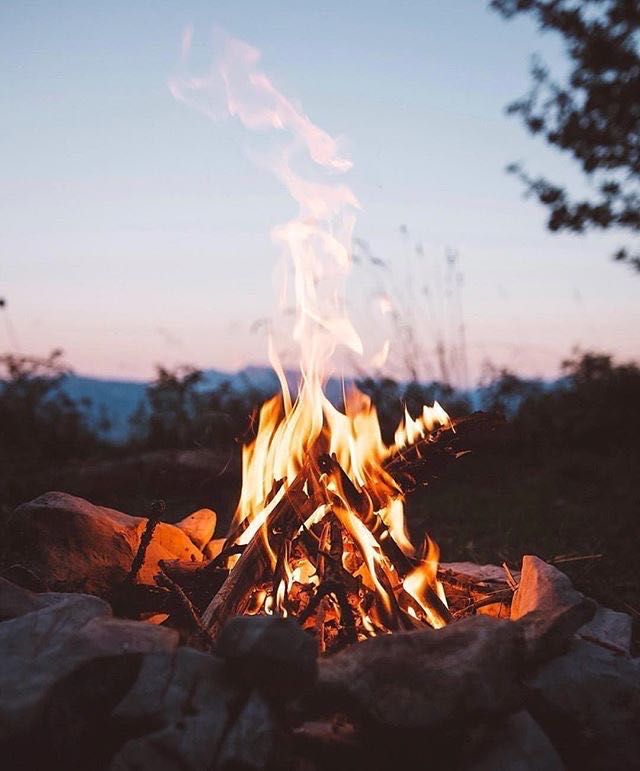
It is first the geographical center of Mongolia.
It is also located at the junction of two major Mongolian ecosystems: one of the country’s major mountain ranges – the Khangai – and a northern edge of the Gobi Desert.
Mount Batkhan overlooks this area and gives rise to several rivers that mix their waters with the sand dunes of Elsentasarkhai – forming a changing and spectacular landscape.
Every night after driving in the Ouasis, rivers and steppes, dunes, our each camp will
be in a sublime and different environment.
On the afternoon of day 4, we visit the monastery of Ovgon Khiid which is located in the mountains of Khugnu Khan, in a wonderful landscape.
Dinners and nights bivouac
Day – 5: Mini Gobi – Horseback Riding in the Orkhon Valley (Kharkhorin)
After breakfast, a 2 to 3 hour drive takes us to the Orkhon Valley which is located in northern Uvurkhangai province.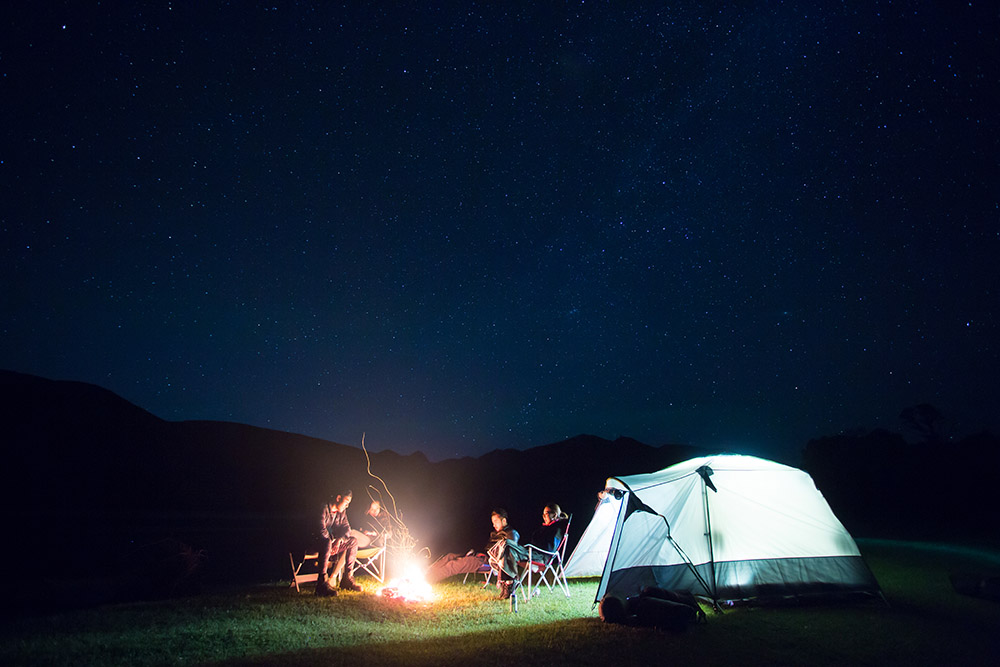
We meet nomad breeders and horses who will be our companions for the next 8 days.
The change of environment is striking: after the desert and the sandy stretches of Mini Gobi, we are now in a mountainous area, a maze of green valleys with wooded slopes.
We start our first day on horseback in the mountains bordering the north of the Orkhon Valley(Kharkhorin).
Classified in 2004 as a UNESCO World Heritage Site as the cradle of nomadic Mongolia, the “Orkhon Valley Cultural Landscape“, covering an area of approximately 122,000 hectares, covers a vast area of grazing land stretching km long and 30 km wide on both banks of the Orkhon River.
Grasslands are still used today by nomadic pastoralists in Mongolia, and many families continue the traditional way of life. In the valleys and around the rivers are nestled yurts which shelter nomadic families. In the wild, herds of horses, yaks, sheep and goats move in these protected areas.
Visit of Erdene Zuu monastery.
Karakorum (Kharkhoryn) is the ancient capital of the Mongol Empire, founded in 1235 by Ogödei, the son of Genghis Khan.
In 1260, Kublai Khan transfers the capital to Beijing. Karakorum was destroyed in 1388 by troops of the Ming Dynasty. Of its former glory remain mere turtle statues guarding the entrances to the city walls.
In 1585, the Erdene Zuu has been built just outside the walls of the ruins of the ancient capital after the introduction of Buddhism in Mongolia as the state religion. Stones from the ruins of Karakorum were used in the construction.
It is surrounded by a wall with 108 stupas. 108 is a sacred number in Buddhism, and it is also the number of beads in a Buddhist rosary (mala).
The monastery was damaged in the 1680s, but was rebuilt in the eighteenth century and in 1872.
For centuries, Erdene Zuu was the most important religious shrine in Mongolia.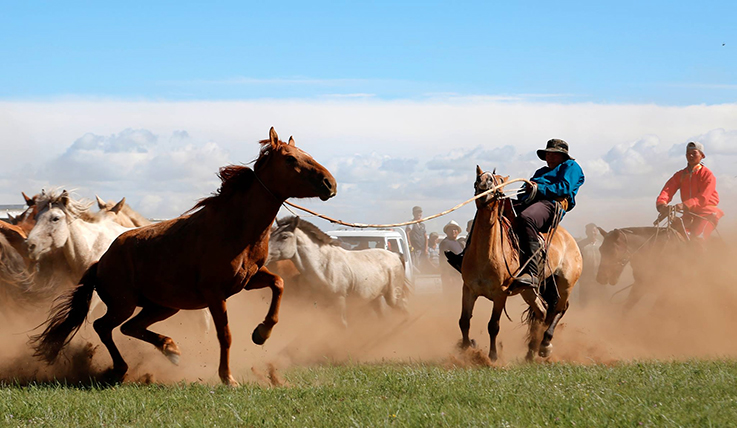
In 1939 the communist leader Horloogiyn Choybalsan destroyed the monastery, in a purge that resulted in the disappearance of hundreds of monasteries in Mongolia and killed over ten thousand monks.
Three small temples and the outer wall with the stupas remained; the temples became museums in 1947.
After the fall of communism in Mongolia in 1990, the monastery was given to lamas and Erdene Zuu again became a place of worship.
The site was restored at the end of the century and regained part of its religious aspect. Today Erdene Zuu remains an active Buddhist monastery as well as a museum that is open to tourists.
We set up camp in a valley near Karakorum.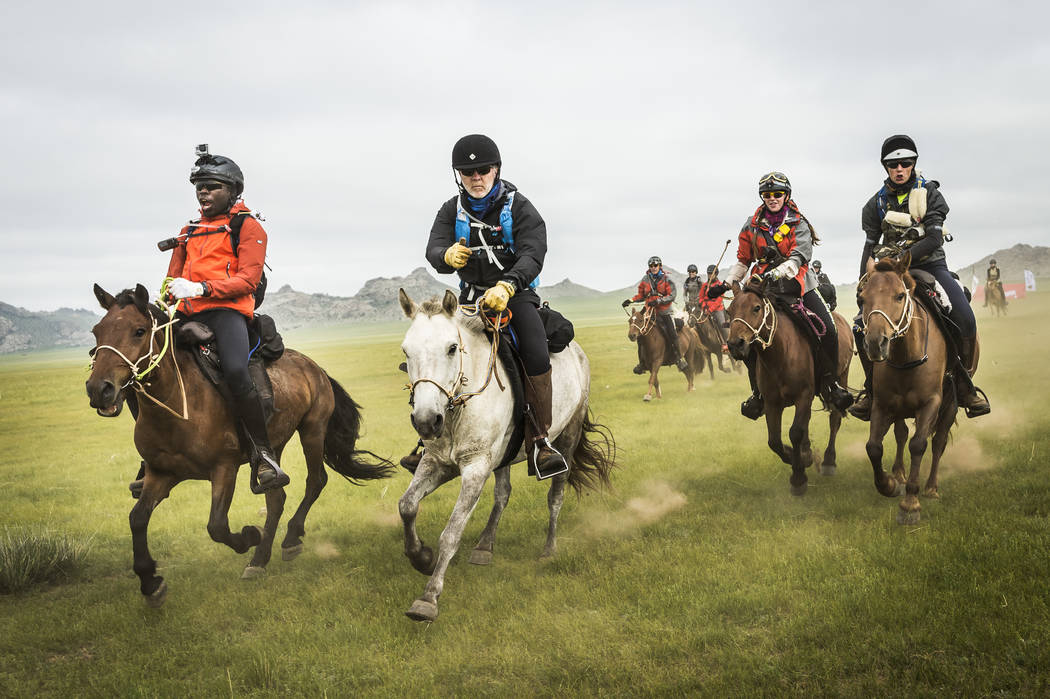
Day – 6 Horseback Riding in the Orkhon Valley (Kharkhorin) to Orkhon River Valley (Tuvkhen Monastery)
After breakfast, we ride another day in the mountains of Khangai.
Picnic lunch brought by our vehicles, nothing to wear on horses, so we can enjoy many gallops!
In the afternoon, we go up to the monastery of Tovkhon.
The monastery of Tovkhon dominates the Orkhon valley at 2400 m altitude.
Tuvkhen Monastery: Located on the border of Uvurkhangai and Arhangai, 40 km north-west of Khujirt soum and 50 km north of Bat-Ulziit soum, situated on the hilly peaks of the high mountain of ‘Undur-Ovoot also called Shiveet-Ulaan. The mountains can reach up to 5 kilometers from the monastery. The first chief Lamaisme Bogd Guegueen Zanabazar was born in 1648, when he was 14 years old, interested in the unique natural beauty of this natural beauty, and in 1651 he built a stone house with a stone wall to practice meditation and called it “Dubkhan“. The name changed Tuvkhun.
You have to climb up to the monastery, about an hour climb through a beautiful mountain forest. You can visit the temples and caves that are related to beliefs, such as that of a spiritual rebirth after a passage in a very narrow pipe dug into the rock.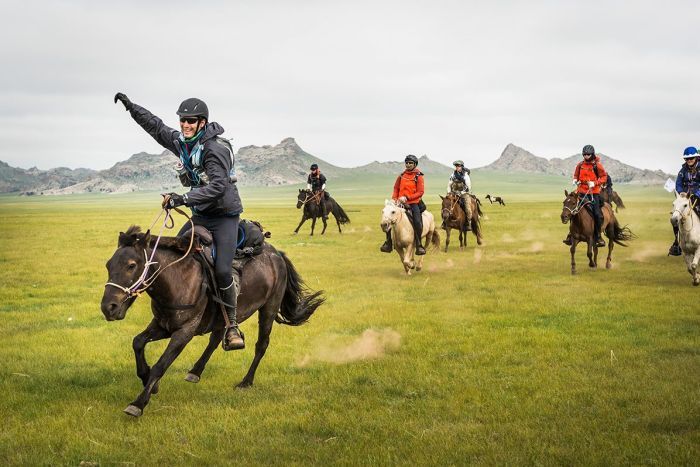
The top view extends 360 degrees tens of kilometers beyond the mountain ranges surrounding the Orkhon Valley in long undulating waves, sometimes covered with dark forests, sometimes bordered by green meadows.
Dinner and overnight in bivouac
Day – 7 Orkhon River Valley (Tuvkhen Monastery) to Orkhon River Valley (The passage of the Dalan)
After breakfast, we descend the mountains to the banks of the Orkhon. The views are
amazing on the big valley with wooden mountains in the background.
 Picnic lunch brought by our vehicles, nothing to wear on horses, so we can enjoy many gallops!
Picnic lunch brought by our vehicles, nothing to wear on horses, so we can enjoy many gallops!
We visit the Ulaan Tsutgalan Falls on the road and arrive at the Dalan Pass.
The Orkhon Falls are in fact the falls of the Ulaan Tsutgalan River. The river falls into a spectacular canyon formed after a volcanic eruption more than 20,000 years ago, forming a cascade 26 meters high and 5,5 meters wide.
The site is enchanted by the contrast between the whiteness of the moss and the black rock that forms the walls of the canyon. Down the walls to the foot of autumn, you will discover trees and flowers that take advantage of the abundance of water to grow.
Dinner and overnight bivouac
Day – 8 Orkhon River Valley (The passage of the Dalan) to Orkhon River Valley (Baga Khushigt)
After breakfast, we continue our riding in the upstream part of the valley where the landscape becomes more and more wild.
This volcanic region has ancient black lava flows that contrast with the white running water of the Orkhon River.
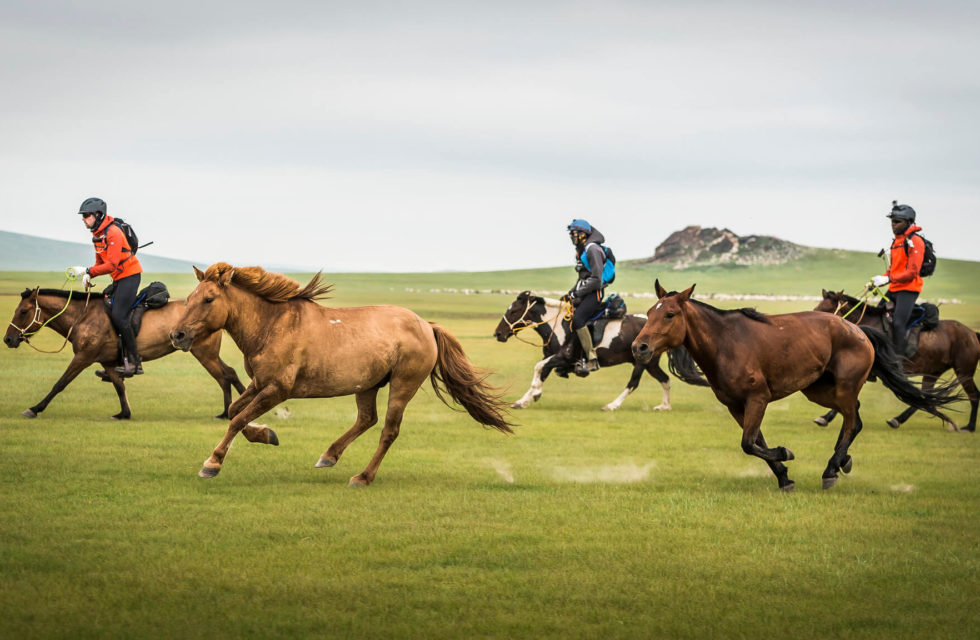
Picnic lunch brought by our vehicles, nothing to wear on horses, so we can enjoy many gallops!
On horseback, we reach the forest with the impressive mountains.
Dinner and overnight bivouac
Day – 9 Orkhon River Valley (Baga Khushigt) to Orkhon River Valley to Naiman Nuur
For the next 3 days, the ride will have a totally different rhythm: after the great outdoors, we now ride in very wild and remote landscapes: the Naiman Nuur Natural Park, which means “the Park of 8 Lakes“.
Yaks carried the equipment and your personal suitcases during these three days because this beautiful isolated region is not accessible to vehicles.
We pack the luggage and camping gear on the yaks and start our steep climb to the mountains.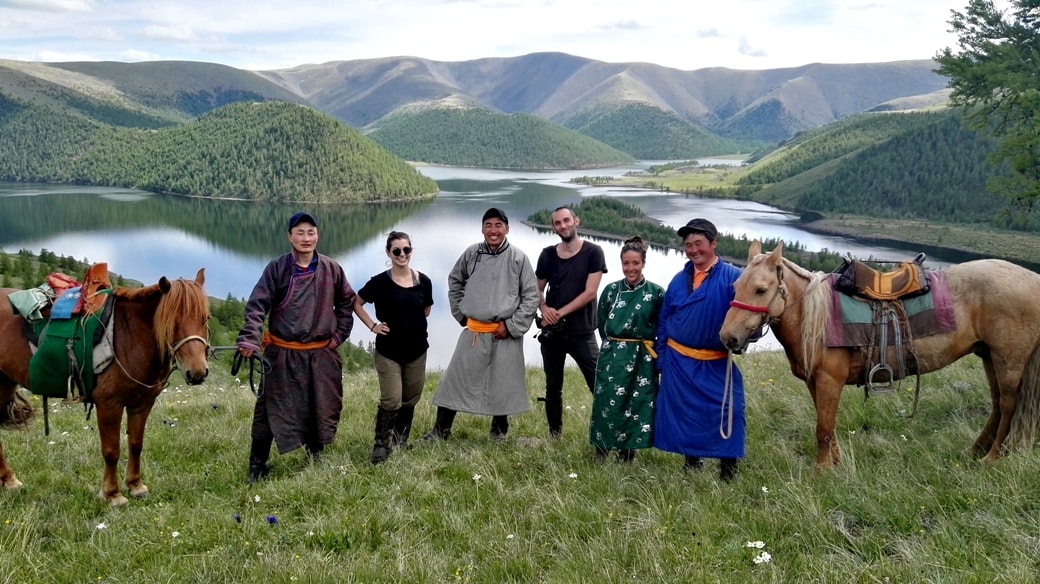
Picnic lunch en route.
After the ride, we set up camp on the shore of Lake Khuis (the smallest of the eight) for dinner and overnight.
We will stay 2 nights on this campsite, to avoid having to ride with loaded yaks the next day, and therefore enjoy a faster equestrian rhythm.
Day – 10 Park the Naiman Nuur (visits the lakes)
Today we ride in beautiful steppes and wooded mountains, discovering the beautiful scenic lakes of the park.
The largest lake is Shireet, it is 2800 meters above sea level with fresh water. We picnic here and we can swim in this lake.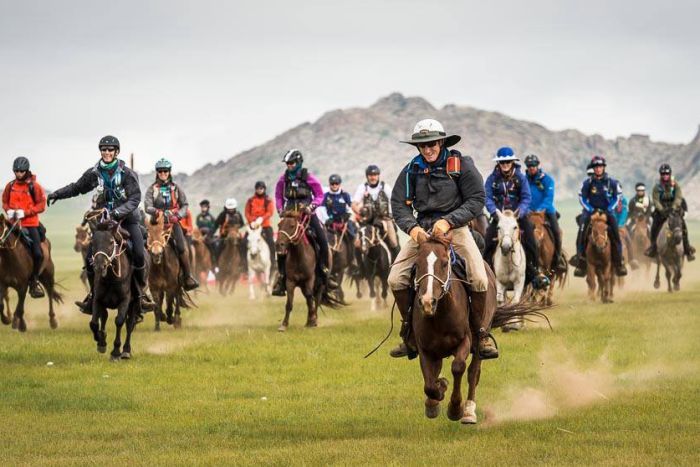
Dinner and overnight on the same campsite.
Day – 11 Park the Naiman Nuur to Buurug
Today, we leave Naiman Nuur Park with our pack yaks to return to the Orkhon Valley.
We ride through rugged mountains and enjoy our safe horses and the ability of our yak guides!
We find our vehicles and set up our camp on the banks of the Boorog River.
Dinner and overnight bivouac.
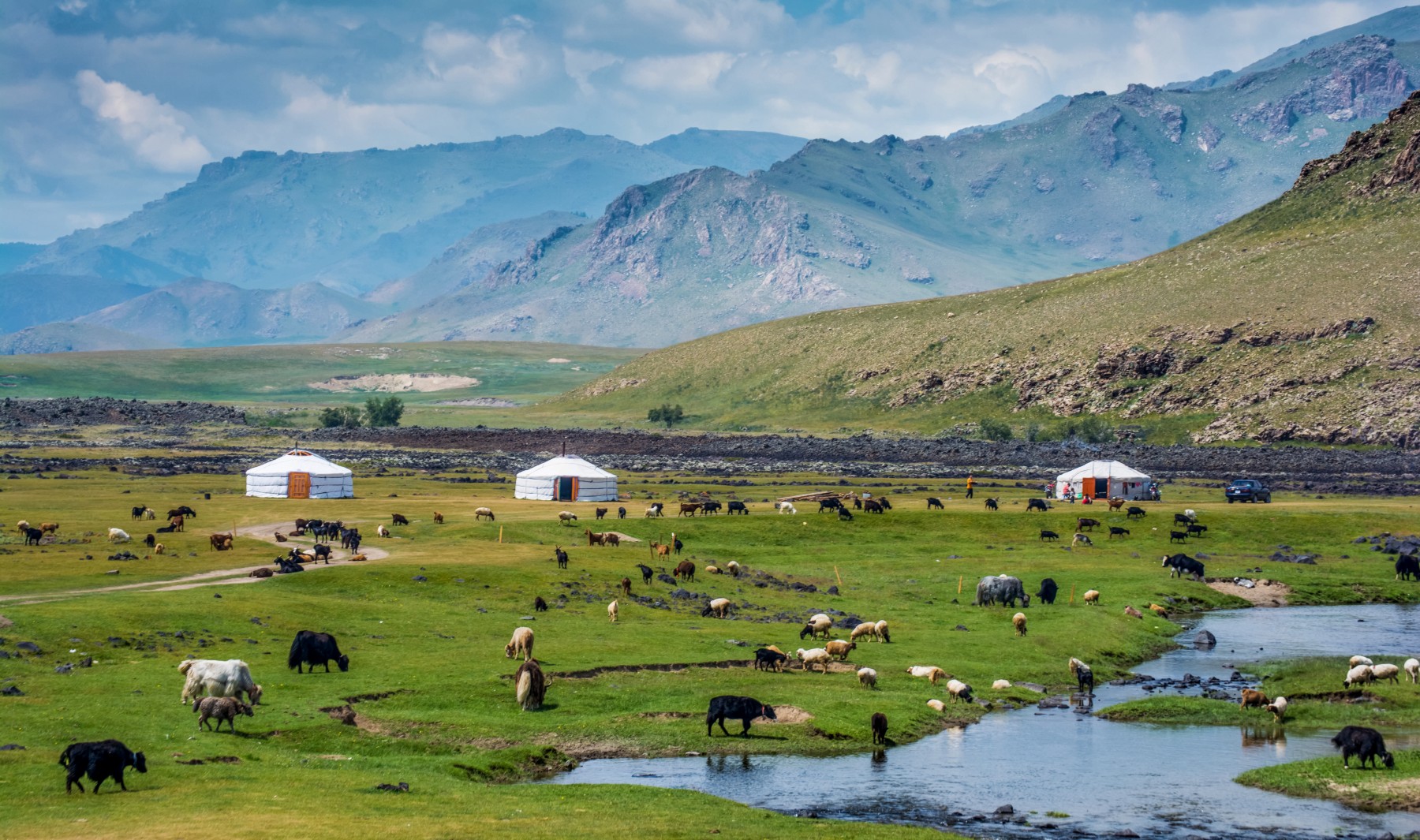
Day – 12 Buurug to Khyatruun River (nomadic family)
After the breakfast; let’s go for the discovery of the nomadic way of life!
The day is devoted to the discovery of the traditional way of life of the nomads of Mongolia.
Each camp of yurts is home to a family whose daily life is punctuated by the care of herds: dairy mares, sheep, goats and dris (females yacks), caring for sick or weak animals, moving animals to new pastures …
The women also take care of the children, they cook, prepare various dairy products (butter, cheese, fermented mare’s milk, drinking milk …) and maintain the interior of the yurt.
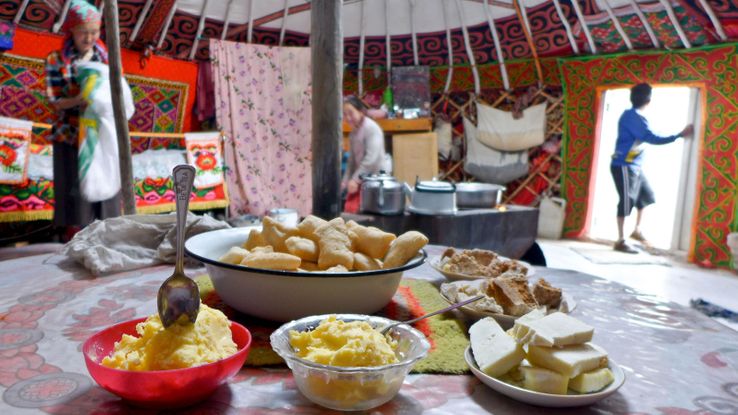 The men take care of the animals, the maintenance of the equipment and the harnessed horses.
The men take care of the animals, the maintenance of the equipment and the harnessed horses.
We can participate in these activities and get to know the different members of the family.
During the day, we can still spend some time in the saddle, helping them gather the herds, or just take a tour to explore the area.
In the evening, our hosts will prepare a traditional specialty, the Khorkhog, the “Mongol Barbecue“.
Khorkhog is a traditional nomadic specialty of the Mongolian steppe. You will almost never find it in a restaurant.
To prepare the Khorkhog, the nomads cut the sheep or goat into pieces, keeping the bones.  Fifteen stones the size of a fist are heated in the fire.
Fifteen stones the size of a fist are heated in the fire.
When they are hot enough, they are layered with the meat in a metal container, which is often a can of milk.
Other ingredients are added on stones and meat, potatoes, carrots, cabbage, seasoning …
Sufficient water is added so that all the ingredients are cooked by both the steam and the heat of the stones. The container is closed and placed on the fire for an hour to an hour and a half.
When the container is opened, the Khorkhog is ready to eat.
The family removes the meat and vegetables, as well as the stones that have become black, both because of the fire and the fat they have absorbed.
These stones are still hot and the guests keep them in their hands because the Mongols consider them to be beneficial for health.
We usually eat the Khorkhog with the fingers, using a knife to cut the meat.
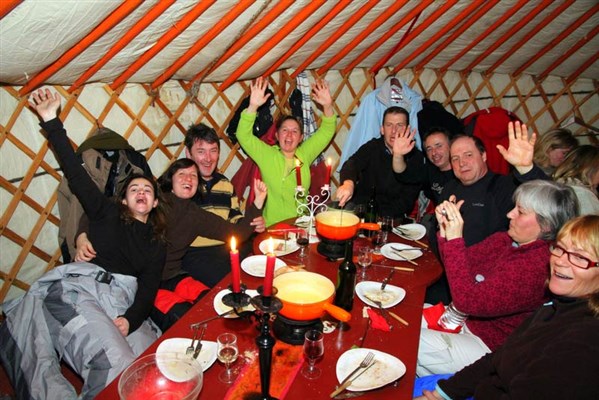
This night, we will sleep in a “yurt of hosts” close to the yurts of our nomadic family.
The comfort is simpler and you will discover the real nomadic way of life …
Day – 13 Khyatruun River to Jargalant Hill
Today, we leave the Valley of Orkhon and continue our journey to the meridional chain of Khangai.
We arrive near the big hill of Jargalant and settle in a nomadic family.
Lunch at a roadside restaurant.
Planned activities: visit Uurtiin Tokhoi (the corner of dawn), participate in the task of the nomads
Dinner and overnight at our guests.
Day – 14 Jargalant Hill to Cliffs of Shakhlaga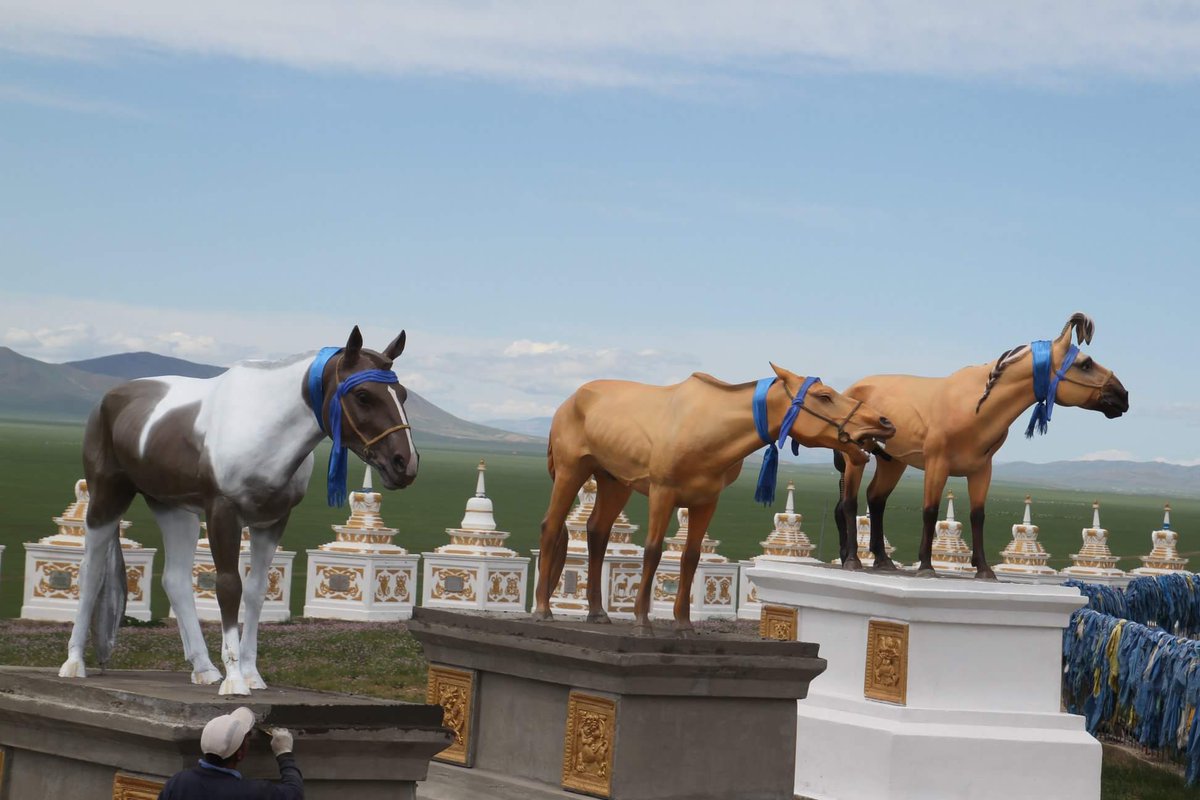
After breakfast, we continue our trip to the south and the cliffs of Shakhlaga.
Before leaving the Khangai areas, we stop at the Horse Sanctuary complex.
In this region, the Mongols prayed before the horse race. In 2008, the Horse Sanctuary complex was built. The monument of many horses won at the Naadam festival is immortalized here. The particularly famous monument of the horse Arvagar-Kheer is placed in the center.
After this visit, we will discover the 2 natural pyramids and cliffs in amazing formation that contain various natural minerals.
Picnic on the roadside

Planned activities: visit of the complex of the equestrian sanctuary, 2 natural pyramids, the cliffs of Shakhlaga
Dinner and overnight bivouac
Day – 15, 16 Cliffs of Shakhlaga to Sand dunes of Khongor
Today, we will continue our journey in the sand of Khongor.
The site is one of the largest and most famous sand dunes in the country, and the most important moment of our trip to the southern gobi will be here. We will ride on camels and ski between sand dunes. Let’s enjoy the musical sand dune to see the sunset.
We will stay 2 days in this natural park.

Activities planned: Hike between the dunes, Sandboard near the source of Seruun, Camel ride, Visit of a Mongol family
First night camp near the dunes, second night at the camp of yurts (2 to 4 people per yurt, with single beds, showers in a separate building).
Day – 17 Sand dunes of Khongor to the Canyon of Yoliin Am
After breakfast; our visit will continue on Yoliin Am to the east of Govi Gurvan Saikhan region in Umnugovi province. There is a gorge in the Gobi and is characterized by ice until July. It is home to rare animals. When you arrive in the morning, you can see argali, ibex and leopard.

Lunch on the roadside.
We settle in a nomadic family
Planned activities: visit the canyon of Yoliin Am
Dinner and overnight in a nomadic family
Day – 18 The Canyon of Yoliin Am to the cliffs of Tsagaan Suvarga
Today we will drive to Tsagaan Suvarga cliffs in Dundgobi province.
Tsagaan Suvarga: A 60 meter high canyon stretches from west to east. The beautiful formations of Mother Nature. It could be similar to the Grand Canyon in the United States but so colorful. Interesting facts, you can see gemstones, fossilized trees and red corals. This proves that formerly this desert was the bottom of the ocean.
We will camp near the cliffs.
Lunch on the roadside
Activities planned: walk in the cliffs of Tsagaan Suvarga (White Stupa)
Dinner and overnight bivouac
Day – 19 The cliffs of Tsagaan Suvarga to Baga Gazriin Chuluu
After breakfast; we continue our trip to the south of Dundgobi province.
Today, we will travel 280 km to reach the Baga Gazriin Chuluu National Park.
Lunch at a roadside restaurant.
Baga Gazriin Chuluu: Located on 37 km north-west of Delivertsetsogt soum of Dundgovi aimag. About 1768 meters high, granite stone areas on an area of 300 km. There are many sources in the valleys as well as ancient tombs, cairns, rock paintings and monuments. There is much to see in the south canyon, Jargalant cave, the medical source for the eyes, the cave, Hun’s tombs, etc.
Activities planned: visit the ruins of an ancient monastery, the medical source for the eyes, the cave.
Dinner and overnight bivouac.
Day – 20 Baga Gazriin Chuluu to Ulan Bator

Breakfast and drive to Ulan Bator.
Lunch at a roadside restaurant.
Afternoon is dedicated to shopping in stores downtown, or at the Narantuul “black market” where you will find traditional clothing and objects of daily life.
Visit a cashmere factory.
In the late afternoon, you will attend a show with traditional dances, music and songs from Mongolia, especially the amazing Khoomei.
The Khoomei is an overtone singing (throat singing) in which the singer produces two distinctively audible pitches at the same time, including a low pedal note, or drone, derived from the fundamental frequency of the vocal cord vibrations, and higher melodic notes that result when the singer’s mouth acts as a filter, selecting one note at a time from among the drone’s natural overtone series pitches.
The sound is reminiscent of the Jew’s harp.
This type of song is recorded in Intangible Cultural Heritage of Humanity by UNESCO in 2010.
Dinner downtown and overnight at a 3* hotel (local standard) in the center of Ulan Bator.
Day – 21: Return Home
Breakfast (depending on your flight schedule) and transfer to airport for your flight back home.
INCLUDED
- Airport / hotel / airport transfers
- 2 nights in a ** hotel in Ulaanbaatar, breakfast included
- Full board during the excursion
- Meal at Ulan Bator
- Mineral water
- 2 nights in a comfortable yurt camp with hot shower
- 2 nights homestay, in guest yurt
- 14 nights in a tent
- Travel in 4×4 or mini bus + driver
- Gasoline
- English speaking guide
- Cook for groups> 4 participants
- Horse riding
- Horse rental + 1 additional horse for 3 or 4 people in case of bad understanding with your horse or injury
- Equestrian equipment with Kazakh or English riding saddles
- Grooms
- Camel ride
- Local horse guides and camel guides
- Entrance fees to the parks and museums mentioned
- Traditional show
- IRIDIUM satellite phone
- Kitchen equipment (mess tent, camping tables and chairs) and for sleeping (tent, sleeping bag, ground mattress), sanitary tent
NOT INCLUDED
- International transport
- Passport & Visa Fees
- Repatriation insurance
- Travel insurance
- Extra drinks / alcohols
- Phone calls
- Any excursion not mentioned in the program
















